Legislation is sweeping the country to enable researchers to study how psychedelics - like mushrooms and psilocybin - can be used as a potential treatment for PTSD.
In fact, states like Connecticut, Colorado, and Oregon already have pending legislation to investigate or decriminalize psilocybin for medical treatment.
If you're wondering about the science and the legislation surrounding psilocybin for PTSD treatment, you've come to the right place.
Let's dive in.
What is post-traumatic stress disorder (PTSD)?
Post-traumatic stress disorder will affect nearly 6% of the total population during their lifetime.
Of course, humans suffered from traumatic events leading to PTSD long before it was given a name.
Its origin as a named disorder began after World War I. Those who survived concentration camps had continued feelings of anxiety, depression, and terrifying flashbacks about their experience. These post traumatic experiences were first coined as “concentration camp syndrome” by Paul Chodoff.
However, PTSD is not solely linked to veterans, the military, and those affected by war. Although, these people represent one of the largest groups that suffer from the sometimes-untreatable condition.
PTSD can also be caused by a wide list of life experiences, like a severe accident, sexual assault, child abuse, disaster, witnessing death, and more. PTSD can result from a short traumatic experience or happen as a result of prolonged or repeated trauma.
And with the effect it’s having on the population, there is a strong reason for the growing interest in using psilocybin to treat PTSD.
But, psychedelics as a potential PTSD treatment aren't an entirely new finding.
Let's start by reviewing the history of psychedelics as a treatment for PTSD.
The history of psilocybin for PTSD treatment
There is not a lot of documented scientific research on psilocybin and other psychedelics as a possible treatment for PTSD. But that doesn’t mean it doesn’t have a long and colorful history.
Psychedelics were studied as early as 1913 for their application in a number of mental health ailments and disorders including alcoholism, schizophrenia, and “psychotic” patients.
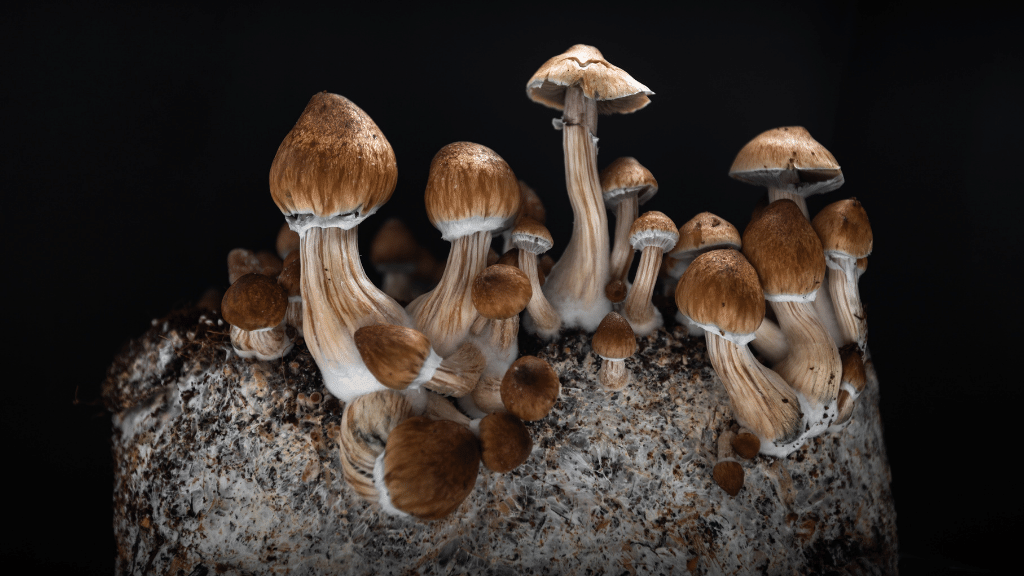
1953 saw the first application and study of psychedelics as a therapy for PTSD. According to one source,
"After World War II, narcosynthesis was used to treat patients with “shell shock” (essentially renamed as posttraumatic stress disorder (PTSD) during the Viet Nam war era). This study was the first to consider the value of LSD in treating the emotional problems in many veterans returning from the battlefield."
However, their research mostly covers the pros and cons of sodium amytal vs LSD as a treatment drug. There is very little presented about the methods or benefits of the therapy itself.
Psychedelics were first formally and structurally studied as a treatment for concentration camp syndrome in the 1960’s by Jan Bastiaans, a dutch neurologist and psychiatrist.
By this time, psychedelics were being used widely and recreationally without any regulation on a pretty large scale. Of course, not everyone was pro-psychedelics, but as research was studied about people’s experiences, consumer interest followed.
Bastiaans used LSD and psilocybin as a therapy to help treat patients with PTSD.
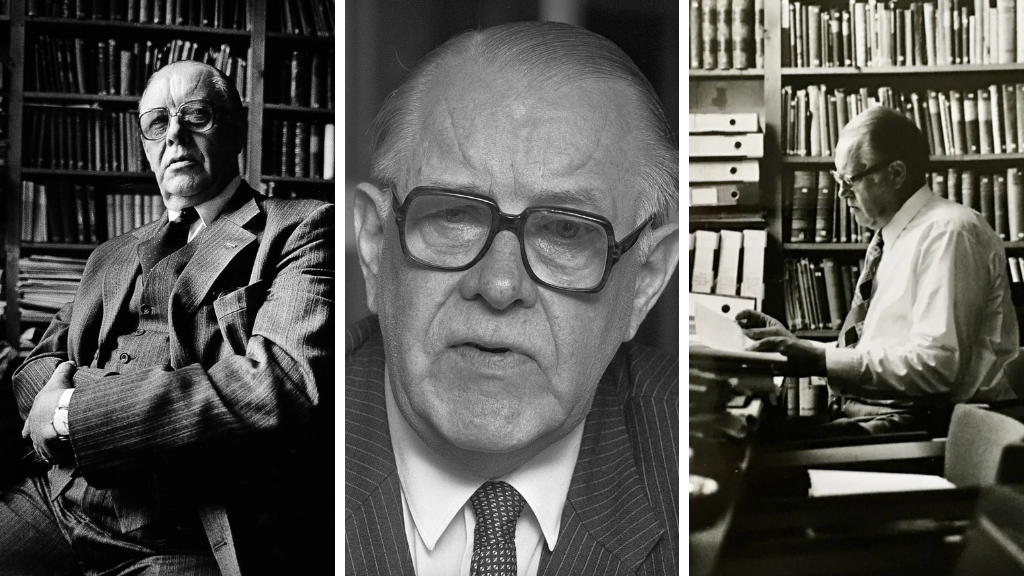
His treatment was founded around the idea that psychedelics can help open people's minds to move past their prior and adverse life experiences. As you can imagine, this was frowned upon by many. It was not just ordinary people, but those in the psychiatric field who thought it was dangerous. However, Bastiaans is largely credited as a major and founding figure in psychedelics research for PTSD.
While it appears formal documentation on Bastiaans' research is scarce, one source suggests that patients would opt into psilocybin therapy after traditional methods failed. After agreeing to the treatment, patients would attend between 3-7 sessions where psilocybin would be administered. Each session was led by Bastiaans as lead therapist but was typically attended by a doctor, psychiatrist, student, nurse, or other sitting assistants.
Using a conscious-altering drug to relive traumatic experiences and process them has its potential drawbacks.
At the time, no one really knew much about medicinal applications. But Bastiaans was confident in its potential. He claimed to be able to cure even the most challenging cases.
In Bastiaans' published works, he states:
“The experience of being threatened and having one's freedom violated also produces mental isolation. The individual consciously or unconsciously locks himself into mental invulnerability-structures of a psychotic, psychoneurotic or psychosomatic nature… The patient becomes isolated from his emotions by an excessive use of self-restraint. The loss of freedom in these patients is caused mainly by traumatic events or unresolved conflicts from early childhood or a later period in life. Psychotherapy should focus on liberating the patient from his mental entrenchment and helping him find his way back to freedom.”
However, it’s important to note that while he claims success rates to be high, he does self report that in two cases, patients got worse.
However, in 1999, some of Bastiaans' former patients were given a questionnaire and asked to discuss their experiences. In some cases, even so many years later, patients believed the treatment was still effective, some 15+ years later.
"[These patients] report that they are still content today. They report: "I believe my life was saved," "I feel fully integrated in society" or "I feel that the treatment brought closure to a period of my life."
Bastiaans' research was inconsistently and sometimes completely undocumented. As a result, his research is widely dismissed and ignored in the psychedelics world, despite its seemingly long-lasting impact on some patients.
In 1970, research and experimental therapies with psychedelics as medicine was effectively halted across the country - and around much of the globe - after The United States government classified all psychedelics - including magic mushrooms - as Schedule I drugs. This classification significantly limited any new psilocybin research.
Imagine where our knowledge of psychedelics as medicine would be today if they hadn't been targeted in the drug war.
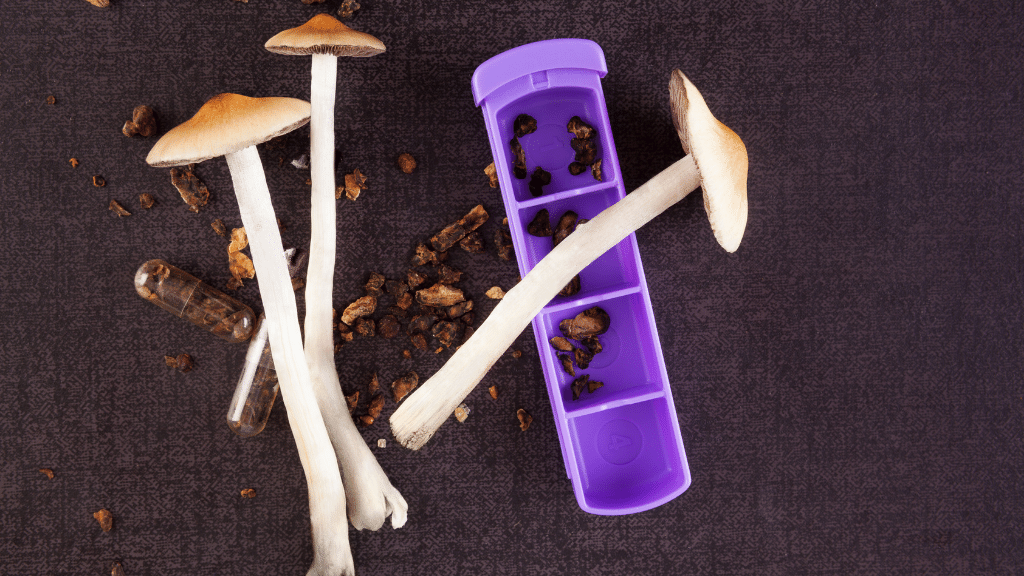
Comparing psilocybin therapy to traditional PTSD therapy
The historical use certainly sets a precedent for the compound, but the main factor is that current drugs being administered for PTSD don’t always work. Patients become more agitated when they are left with no other alternative for treatment, and doctors feel the same, wanting to be able to provide their patients with something that works. So, research turned to psychedelics like psilocybin.
In 2018 and 2019, The FDA also awarded Compass Pathways and the Usona Institute breakthrough therapy designation for their psilocybin-based drugs for the treatment of depression. This designation opened the door to explore psilocybin therapy for a multitude of mental health conditions.
One of the most prominent applications is for PTSD.
Traditional therapy for PTSD has three main goals:
- Improve your symptoms
- Teach you skills to deal with it
- Restore your self-esteem
Therapies can include cognitive processing, prolonged exposure, stress inoculation, and more. But generally, PTSD therapy is bucketed under cognitive behavioral therapy (CBT).
The results of CBT are generally positive according to published research for “short discrete” traumas. Despite these positive outcomes, the same study states that prolonged traumas or an inability to attend sustained weekly therapy sessions could potentially lessen the effectiveness of CBT.
Medications used to help with PTSD cross the gambit of beta-blockers, antidepressants, sleep aids, and specific medications, like paroxetine.
But traditional therapy can be expensive, time-consuming, and sometimes inaccessible to certain patients. Plus, they require weekly and sustained attendance in many cases.
Medications may only offer temporary relief of some of the symptoms of PTSD like sleeplessness, anxiety, and depression. One study on paroxetine shows positive results compared to a placebo, but lists the medication as a short-term solution. Medication does not effectively treat the cause of of PTSD.
How magic mushrooms could help with PTSD
The investigated use of psilocybin for PTSD aims to study the way the brain responds to the compound. Psilocybin treatment for PTSD falls back on Bastiaans' belief that psychedelics could open the mind and present new pathways for the brain - and patients - to safely face and overcome their traumas with the guidance of a professional.
Let’s first look at the current antidepressants that are used to help treat PTSD and how they are thought to work.
From NYU Langone Health, “These medications work by raising levels of the brain chemical serotonin, which regulates mood, appetite, and sleep. This helps to improve communication between nerve cells, leading to improved mood and decreased anxiety.”
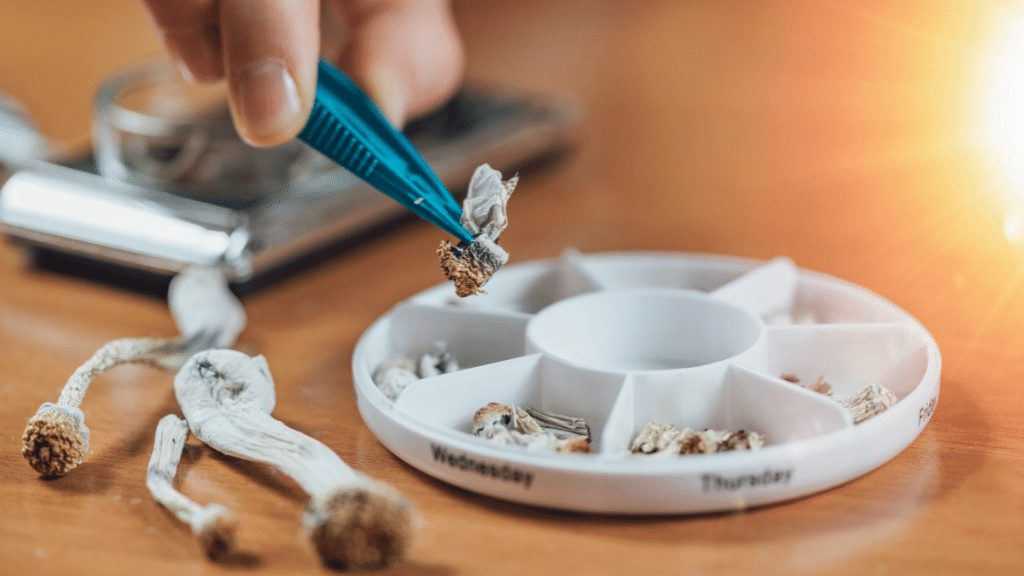
But, it’s certainly not a cure-all and often, it doesn’t work. It also states that, “It can take up to 12 weeks for SSRIs to become fully effective. Side effects may include insomnia, anxiety, nausea, sexual dysfunction, and diarrhea.”
And that really is the hard part, right?
Not only are there a list of known side effects, but waiting up to 3 months when you’re suffering from PTSD, just to know if your new medication is working, is a long time to hold out hope for.
Patients want something that works quickly and doesn’t have harsh potential side effects.
Enter psilocybin as a potential treatment.
Like antidepressants, psilocybin also acts on serotonin receptors, and this study states, “psychedelic effects are believed to emerge through stimulation of serotonin 2A receptors (5-HT2ARs) by psilocybin’s active metabolite, psilocin.”
But it takes a step further. While research is ongoing and we don’t know exactly how it interacts with the brain and the and how long results last, there are studies that provide some findings into the matter.
In a study by Yale, “researchers show that a single dose of psilocybin given to mice prompted an immediate and long-lasting increase in connections between neurons.”
Antidepressants don’t alter the way that neurons connect to each other, but compounds like psilocybin do.
Another study stated, “Along with the direct effects on neurochemical systems, psilocybin alters neural circuitry and key brain regions previously implicated in depression, including the default mode network and amygdala.”
Almost like a rewiring of the brain? It’s fascinating!
And when we compare the research on psilocybin, although still in its infancy, to the likes of other antidepressants used for PTSD, we not only see that psilocybin may go a step deeper than current treatment options, but that it works almost instantly and may not required continued use.
Most psilocybin treatments are done by 1-3 sessions, often weeks or maybe a month or two apart, accompanied by therapy.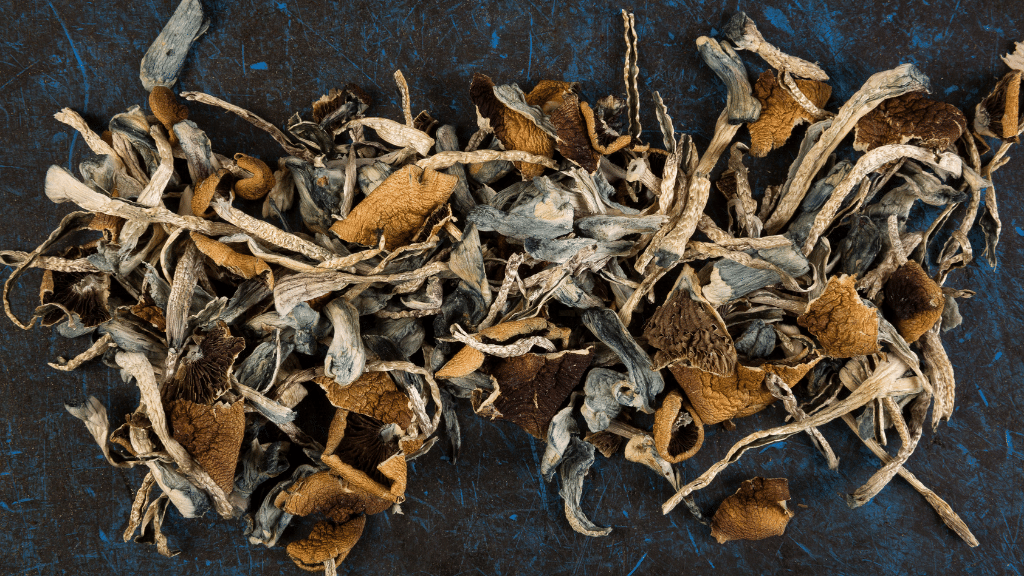
Psilocybin therapy is a form of therapy that gives the patient a dose of psilocybin during a session, administered by a doctor or licensed therapist in the use of psychedelics. It typically takes about a half hour for the treatment to kick in. A curated music playlist by the licensed therapist is typically played during the session and it lasts for about 6 hours. Upon completion, the therapist and the patient discuss the experience to further explore what the patient saw in the session and help them provide meaning to it.
Current Studies on Treating PTSD With Psilocybin
In the current century, there haven’t been any completed clinical trials into the treatment of PTSD with psilocybin, but recruitment is underway.
One of the most signficant trials, now being recruited for, is by Compass Pathways.
They were the first to gain breakthrough therapy designation by the FDA for their COMP360, psilocybin drug for the treatment of major depressive disorder. The company is the furthest along in the approval process, having completed Phase 2b trials with statistically significant results. Now they aim to investigate the drugs effects on PTSD.
Cybin, another public company in the space, is sponsoring a trial on psilocybin as a treatment for healthcare workers covering conditions like anxiety, depression, PTSD, and the “burn out” that has been heavily influenced by the past few years.
Another trial, not yet being recruited for, is studying the effects on psilocybin and PTSD.
If you’d like to stay updated on all clinical trials involving psilocybin, subscribe to our newsletter. We’ll keep you posted on everything happening in the medical field!
Psilocybin Legislation for PTSD
Psilocybin, although now being more heavily researched for its medicinal value, is still federally illegal in the United States, with certain states and local areas proactively deciding to decriminalize and/or legalize for medical use.
Our goal at Remeday is to be an advocate and work to get people the help they need, as we believe psilocybin and magic mushrooms can play an integral part in the treatment of mental health conditions.
But legislation will take a while. The important thing is that it is heavily researched so that we can better understand the effects and how it works, as well as any long term effects and the duration the treatment lasts. Over the next couple years, we have a strong inclination that this will begin to take shape.
It’s already happening to a degree, and not just in Oregon.
A Pennsylvania bill was introduced last November that would create a blueprint for psilocybin-based clinical trials for its potential as a treatment for PTSD, depression, and drug addiction. However, it does face hurdles to get passed. A lot of it comes down to education. For decades, mainstream media has ousted the use of psychedelics because of its classification as a Schedule I drug, and lawmakers that are against its use, commonly cite drug misuse.
And while this should be a concern, the bills that are being lobbied for are not suggesting that psilocybin be legal. Not just yet, anyway. Instead, they are suggesting that it be open to be researched through professionally-led clinical trials and medical research.
State Rep. Tracy Pennycuick, a veteran herself, who suffers from PTSD, is leading the charge.
If you’d like to stay updated on current state legislation, just jump to this page!
The Future of Psilocybin for PTSD
It’s important to understand that legislation will take time to warm up to the idea that psilocybin can be used for the treatment of PTSD, as well as many other mental health conditions.
But the movement has a lot of strength behind it.
Public companies and private institutions are well on their way to providing continued research and conducting large scale studies. This is exactly what needs to happen for nation-wide (or at least state by state) adoption to take place.
We’re all still learning about how it works, the correct dose, and the long-term effects and duration of treatment.
As this information begins to come to the surface, we believe it is only a matter of time before it becomes a mainstream treatment.
After all, there are only two approved medications in the United States for PTSD, (paroxetine and sertraline) and both have drawbacks, including efficacy, time they can take to improve the condition, as well as adverse side effects.
We’ll continue to publish any new research on this topic and hope that those with PTSD will soon have another alternative treatment.

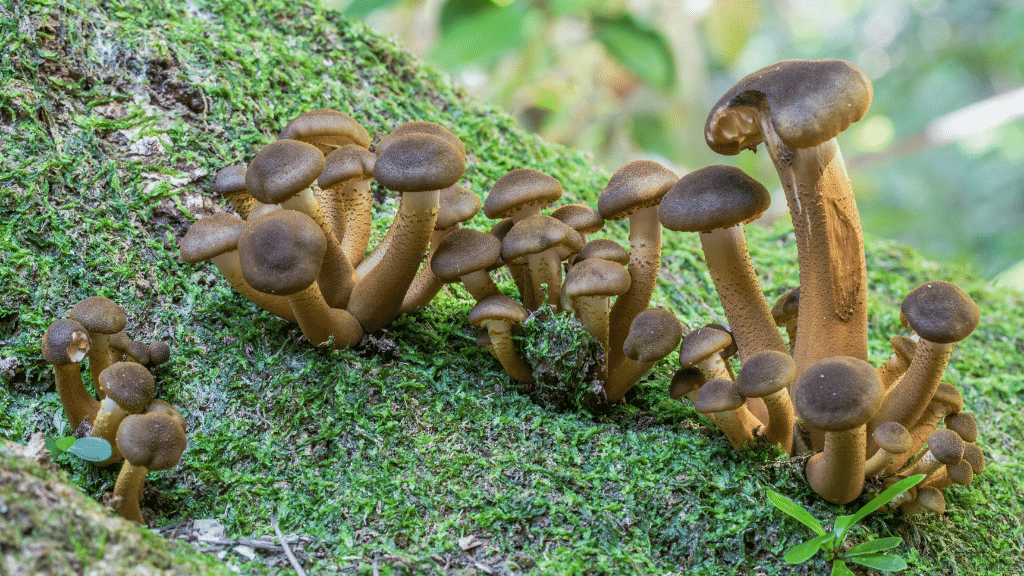
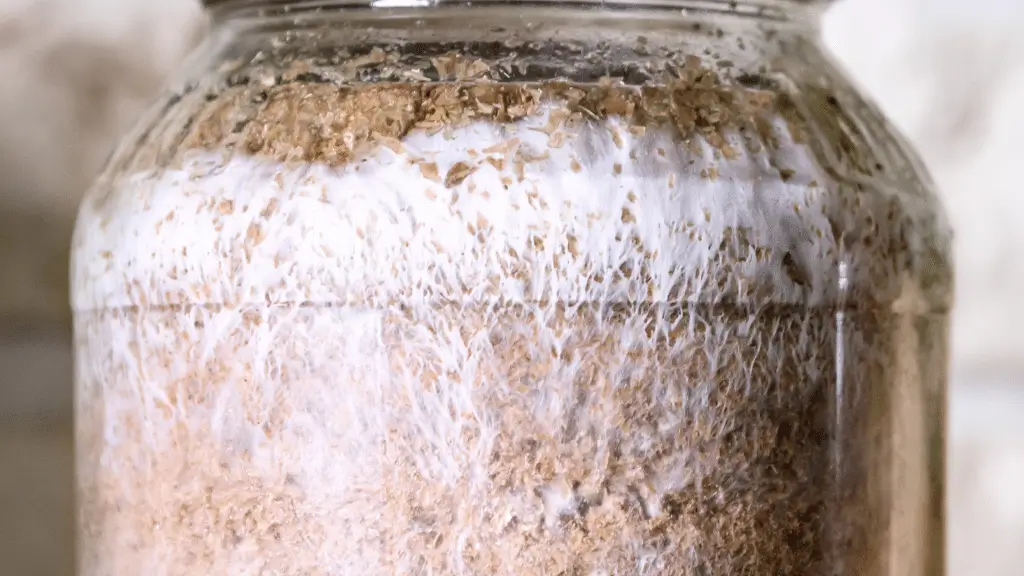


.png)
